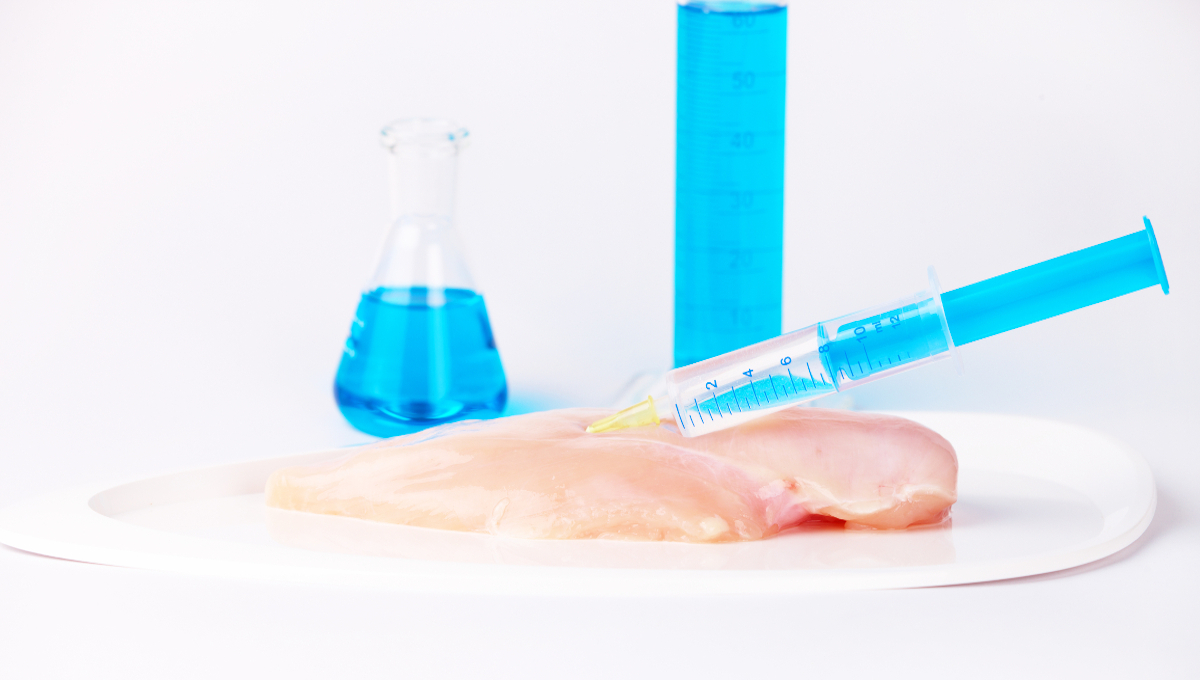— OPINION —
In June 2023, the U.S. Department of Agriculture Food Safety and Inspection Service (USDA-FSIS) issued new Directives and a Notice regarding the regulation of cell cultured food products derived from cell lines of USDA-amenable species. These newly-released USDA-FSIS documents — Directive 7800.1, Directive 5730.1, and Notice 31-23 — address the inspection, sampling, and responsibilities of establishments producing cell-cultured meat and poultry products also commonly referred to as cultivated meat.
With the publication of these Directives and Notice, we now have much more clarity on how USDA-FSIS plans to execute its regulatory obligations in this space, fresh off the heels of the agency’s June 2023 issuance of federal grants of inspection to two U.S. cell-cultured chicken manufacturers and approval of their cell-cultured chicken labeling. USDA’s actions also both follow FDA’s relatively recent issuances of “no-questions” letters to both companies finding that the companies’ products “are as safe as comparable foods produced by other methods.” According to FDA Commissioner Robert Califf and the FDA’s director of the Center for Food Safety and Applied Nutrition, federal agencies are “committed to supporting innovation in the food supply” and working collaboratively with USDA-FSIS in a joint regulatory framework.
Meat from cells?
In 2013, Dutch scientist Mark Post showcased the first cell-cultured meat burger on live television. Since then, the industry has ballooned to more than 150 companies and counting on 6 continents, propelled by $2.6B in investments, by some estimates.
Harnessing cell culture technology to produce food or cellular agriculture refers to the production of agricultural products from cell cultures, like meat, poultry, and seafood ex vivo, grown outside the animal. Each company’s manufacturing process for animal cell-based food products varies, in part, depending on the type of cell line used (e.g., livestock, poultry, fish or seafood) and the nature of the final product (e.g. nuggets or steak). That said, at a high level, the key manufacturing stages include (1) target tissue or cell procurement, selection, isolation, preparation and storage, (2) cell proliferation, as well as possible cell differentiation, during biomass production (in a specially designed bioreactor) (3) cell harvesting, and (4) processing and formulation of food products. Each stage can potentially include various sub-steps dependent upon on the source and desired final food type. Manufacturers aim to produce a finished product that replicates the characteristics of muscle harvested from food-producing animals.
How Are Cell-Cultured Foods Regulated?
USDA-FSIS and FDA jointly regulate cell-cultured food products derived from cell lines of livestock and poultry under a 2019 Formal Agreement. FDA oversees the pre-harvest production phase of the animal cell culture technology process for all cell-cultured foods. For cell-cultured meat and poultry derived from cell lines of USDA-amenable species, jurisdiction then shifts to USDA-FSIS at the point of harvest. Consistent with the Formal Agreement, any company producing USDA-regulated cell-cultured foods must obtain a federal grant of inspection from USDA-FSIS. That agency oversees the harvesting, processing, packaging, and labeling of such foods. In particular, USDA-FSIS subjects labels under its purview to preapproval and is developing new labeling requirements for cell-cultured meat products consistent with its 2021 Advanced Notice of Proposed Rulemaking (ANPR).
For all other cell-cultured foods falling outside USDA-FSIS oversight– such as most seafood and meat from non-USDA-amenable species (such as elk, deer, antelope, and certain other species). FDA maintains oversight for the duration of the entire production process.
What’s in the New USDA Directives and Notice?
The new USDA-FSIS Directives clarify the regulatory oversight of cell-cultured meat and poultry products pursuant to the 2019 Formal Agreement. Companies producing such products should review the directives in depth, and highlights are presented below.
- Regulated Like Conventional Meat and Poultry Products: The Agency emphasizes that cell-cultured meat is subject to the same regulatory requirements and oversight authority as conventional meat and poultry.
- No Generic Approval: Labels applied to USDA-FSIS regulated cell-cultured meat or poultry must be submitted to the agency for review and approval before they are used in commerce (e.g., “sketch approval” in USDA-FSIS parlance).
- Dual Jurisdiction Establishments: Facilities that harvest cell-cultured meat and poultry products are Dual Jurisdiction Establishments — meaning that they are regulated by both FDA and USDA-FSIS. As noted above, FDA oversees the pre-harvest production phase, and USDA-FSIS, which inspects harvest and any postharvest production that may occur in the same establishment.
- Restrictions on Imports and Exports: Cell-cultured meat and poultry products may not be exported into the United States unless the agency has determined that the foreign country has “a regulatory food safety inspection system that is equivalent to that of the United States for the production of cell-cultured meat or poultry food products.” When USDA-FSIS deems a country to be equivalent for such products, it will add the country as eligible to export “cell-cultured” meat or poultry food products to the United States by species in the agency’s import library. Cell-cultured meat and poultry food products are subject to the same USDA-FSIS import and export regulations and policies as meat and poultry food products derived from slaughter.
- Substances Must Be Considered Safe and Suitable: Ingredients, including processing aids, used pre-harvest that remain in the harvested cells and any ingredients used post-harvest must be considered safe and suitable for use by USDA-FSIS and used in accordance with applicable standards, namely 9 C.F.R. § 424.21(c) or Directive 7120.1 (Safe and Suitable Ingredients Used in the Production of Meat, Poultry, and Egg Products). Ingredients that do not appear in 9 C.F.R. § 424.21(c) or Directive 7120.1 require a technical review, as described in Directive 5020.2 (The Technical Review Process).
- Ingredients already authorized for use in conventional meat and poultry. Ingredients listed as approved for meat and poultry by USDA-FSIS regulation or Directive 7120.1 may be used in cell-cultured meat and poultry food products if the ingredient’s intended use aligns with the application (i.e., as an antimicrobial dip or as an ingredient component), product type (i.e., for use on whole-muscle or comminuted product), and any other enumerated criteria. USDA-FSIS also explained that manufacturers must compare Directive 7120.1 to other applicable requirements, such as those for standard of identity to determine whether an ingredient (e.g. an antimicrobial or binder) can be used in a particular product. As noted above, if an ingredient is not listed at 9 CFR 424.21(c) or Directive 7120.1, then the ingredient requires a technical review under Directive 5020.2.
- Inspections:USDA-FSIS inspectors will examine a facility’s operations at a minimum of once per shift.
In addition, USDA-FSIS Notice 31-23 discusses food safety and process controls. Among other things, raw products samples will be tested for Aerobic Count (AC), Salmonella, chemical residues, speciation, and pathology. Food contact surfaces and environments at facilities producing raw products will be tested for AC and Salmonella. Ready-to-eat product samples will be tested for AC, Listeria monocytogenes (Lm), chemical residues, speciation, and pathology. Food contact surfaces and environments at facilities producing raw products at establishments producing Ready-to-Eat products will be tested for AC and Lm. Samples will be at least 60 grams and collected from every other batch until at least 10 samples are collected.
What’s Next?
Cell-cultured meat and poultry products have officially arrived in the U.S. marketplace and are poised to enter the market more broadly in the coming years. Already, USDA-FSIS approved labeling and issued grants of federal inspection services to two U.S. cell-cultured poultry manufacturers in June 2023. These companies also both recently received FDA “no-questions” letters finding that the companies’ products “are as safe as comparable foods produced by other methods.” As these products move to market, companies should take care to comply with a complex dual jurisdiction environment and obtain regulatory approvals necessary from both FDA and USDA-FSIS.
About the authors:
- Brian P. Sylvester is a partner in Perkins Coie’s Washington office. A former USDA regulatory counsel, he advises emerging and established companies in the food, beverage, and agricultural biotechnology sectors, with an emphasis on innovative foods. He is a leading authority on food tech regulation and serves as a trusted advisor to global brands, startups, life science companies, investors, and trade associations.
- Tommy Tobin, is an associate in Perkins Coie’s Seattle office. He is a Lecturer at UCLA Law, where he teaches a seminar on Food Litigation. Tommy edited the ABA’s Food Law: A Practical Guide, a resource book for practitioners to assist them in meeting the unique needs of food and beverage clients across various domains of legal practice.

